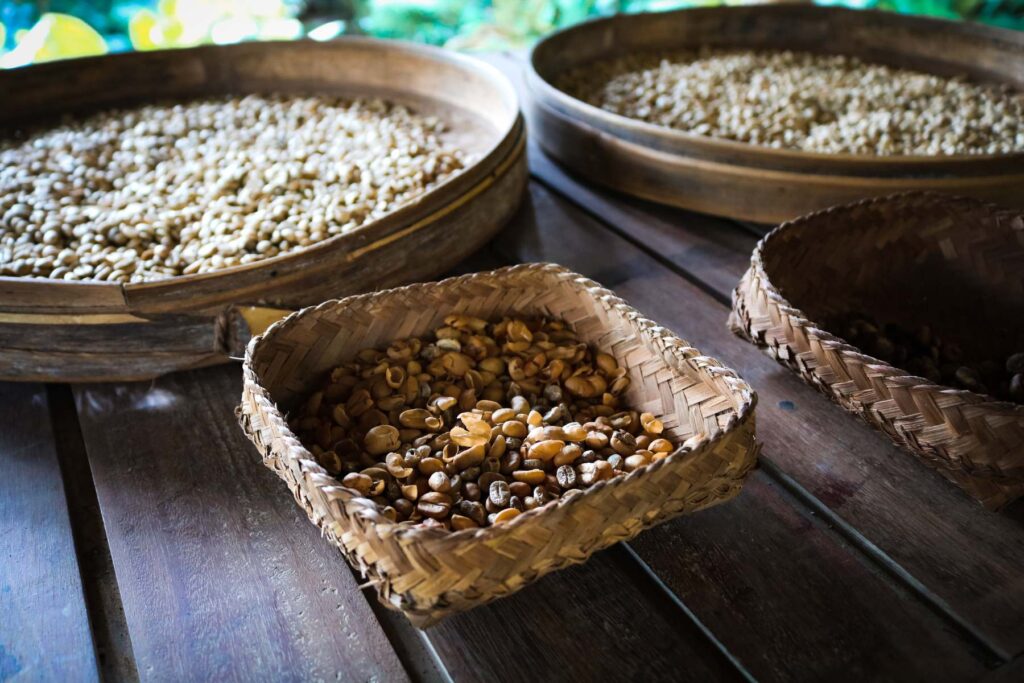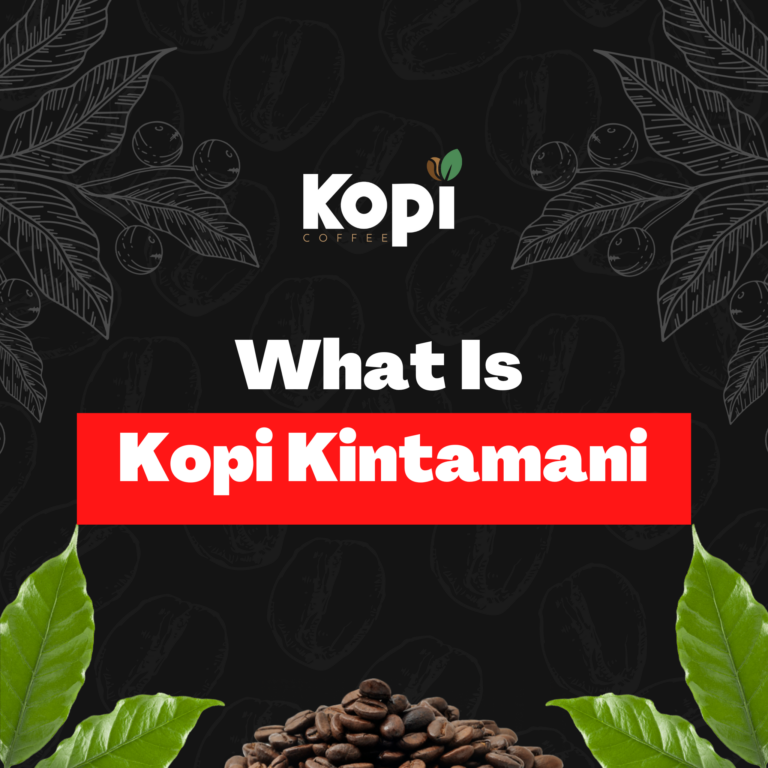If you are looking for a great everyday coffee, Kopi Kintamani is a great choice. Hailing from
the mountainous Bali region of Indonesia, this coffee has a rich and robust flavor that is perfect
for starting your day. Washed processing gives Kopi Kintamani a clean taste, while the high
altitude of the region ensures that the coffee beans are packed with flavor. Citrusy, with notes of
chocolate, brown sugar, and caramel, Kopi Kintamani, is a well-rounded coffee that will please
any palate.

Kintamani Coffee Beans
Kopi Kintamani is made from coffee beans that are grown in the beautiful Kintamani region of
Bali. This area is well-known for its stunning scenery, and the coffee beans reflect this terroir.
The coffee plants are grown at high altitudes, which results in coffee beans that are packed with flavor. The coffee cherries are hand-picked and then processed using the washed method. This method results in a clean-tasting coffee with bright acidity.
So what makes Kintamani coffee beans so unique? Subak Abian farming system is a traditional
Balinese agricultural technique that has been passed down for centuries. This traditional Balinese
system is based on the principle of “Tri Hata Karana”, which means “the three causes of
wellbeing”. This philosophy is reflected in the way coffee plants are grown. Farmers use gravity
to water plants, and they also practice crop rotation to ensure that the coffee plants get the
nutrients they need. The plants are grown in harmony with nature, using sustainable methods that
have a minimal impact on the environment. This results in coffee beans that are of the highest
quality.
The Kintamani region is home to some of the most fertile soil in Bali. This soil is rich in
nutrients, which are essential for coffee plants to thrive. The coffee plants are grown under the
shade of tall trees, which protect them from the harsh sun. Coffee plants in Kintamani are grown
in harmony with nature, using sustainable methods that have a minimal impact on the
environment. By buying Kopi Kintamani, you are supporting Indonesian farmers who are
committed to sustainable coffee production.
In the 90s, coffee prices fell sharply, which had a devastating effect on farmers in Indonesia.
Many farmers were forced to switch to growing citrus fruits instead of coffee. The citrus trees
that were planted alongside the coffee plants imparted their flavor to the beans, and this is what
gives Kopi Kintamani its distinctive taste.
Kintamani coffee is a relatively new coffee, and it was only recently that it received the coveted
Unique Geographical Indication (UGI) certificate. This certification is reserved for products that
have a unique link to a particular place. It means that Kopi Kintamani can only be made from
coffee beans that are grown in the Kintamani region. This makes it a truly special coffee, and it is
becoming increasingly popular with coffee lovers around the world

What Is Washed Processing?
Washed processing is a method of processing coffee beans that results in a clean-tasting coffee
with bright acidity. This method is also referred to as “wet processing”. Coffees that are
processed using the washed method are often described as having a “cleaner” taste. Conversely,
coffee processed using the natural method (where the coffee cherry fruit is left intact during
drying) is often said to have a more “complex” flavor profile, with more body and a deeper
sweetness.
The washed processing method consists of 3 steps:
- Sorting coffee beans
- Removing the fruit from the bean
- Fermentation
The coffee cherries are first sorted by hand. The farmers remove any overripe or damaged coffee
cherries. The coffee cherries are then depulped, which removes the fruit from the bean. Next, the
beans are then placed in a fermentation tank, where they undergo a controlled fermentation
process. The Kintamani coffee beans are soaked in water for 12-24 hours. This allows the fruit to
soften and release its flavor. This process breaks down the sugars in the bean, which results in a
coffee with bright acidity.
Coffee aficionados often prefer coffees that are processed using the washed method. This is
because the coffee tastes “cleaner” and brighter. The washed method also allows the coffee’s
natural flavors to shine through. So you can literally feel like you’re tasting the terroir of the
coffee’s origin.
How To Drink Kopi Kintamani
Traditionally, Kopi Kintamani is drunk black, without milk or sugar. This allows you to feel the
palette of flavors that the coffee has to offer. However, it is always up to you how you want to
drink your coffee. If you prefer, you can add milk or sugar to taste.
Kopi Kintamani is often enjoyed with food, and there are a few different dishes that go
particularly well with this type of coffee. One popular option is breakfast foods such as pancakes
or waffles. It is also often paired with chocolate desserts or pastries. The combination of Kopi
Kintamani with chocolate is a classic that never fails to please. The deep, rich flavor of the
coffee is a perfect match for the sweetness of the chocolate. Kopi Kintamani also goes well with
savory foods. Try it with roasted meats or vegetables for a delicious and unique flavor
combination. If you’re looking for a refreshing pairing, try Kopi Kintamani with citrus fruits.
Kopi Kintamani is also an excellent choice for dessert. Pair it with a piece of cake or some ice
cream for a truly decadent treat.
Kopi Kintamani is relatively low in caffeine, so you can drink it at any time of the day. However,
we recommend enjoying a cup in the morning or early afternoon. This will give you the energy
you need to get through the rest of the day.
This is a special coffee with a rich flavor and a unique history rooted in Balinese culture. When
you drink Kopi Kintamani, you are not just enjoying a cup of coffee but experiencing a piece of
Balinese tranquility and heritage. Sit back, relax, and savor the moment.

